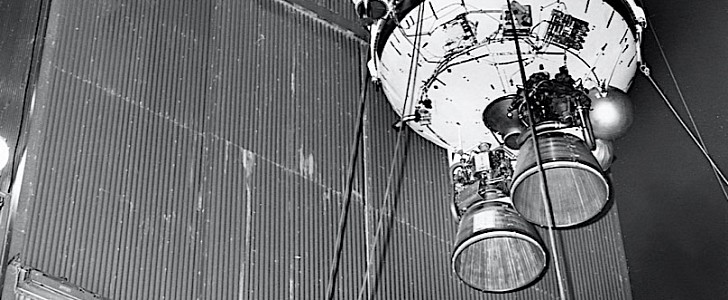Every time we hear of a new near-Earth object (NEO) being discovered, our hearts skip a beat, and our brains go “what if this is the one that ends all life on Earth?” Something like this happened last September when a thing called 2020 SO came into the spotlight.
Discovered by the Pan-STARRS1 survey telescope on Maui, 2020 SO caught everybody’s eye because of its size and peculiar orbit. Guys and gals with degrees that attest they know how these things work were, of course, not worried, but they were curious enough to try and find out what the NEO is.
"Due to extreme faintness of this object following CNEOS prediction it was a challenging object to characterize," said in a statement Vishnu Reddy, an associate professor and planetary scientist at the Lunar and Planetary Laboratory at the University of Arizona. "We got color observations with the Large Binocular Telescope, or LBT, that suggested 2020 SO was not an asteroid."
Turns out we are dealing with a 1960s Centaur rocket booster. Centaurs are made by the United Launch Alliance, the same people most recently responsible for sending the Perseverance rover to Mars. The booster had its first flight in 1962, and went on to be a part of the Atlas, Saturn, and Titan launch systems.
Starting with those early days, and as of January 2018, Centaur boosters flew into space 245 times, but it wasn't very difficult to say what assembly this one was part of: the Surveyor 2 lunar lander, launched on September 20, 1966, and lost a couple of days later as a result of a mid-course correction gone wrong.
It was quite difficult for the team of scientists to identify the object. It took everything from analyzing its composition to comparing the spectra with that of another Centaur booster launched in the 1970s (you can get a better understanding on the process by clicking this link), but they are now ready to confirm this is a man-made object.
On December 1, 2020 SO came within 930,000 miles (1.5 million km) from Earth. It will continue to spin aimlessly in the void of space until March 2021, when it should be thrown back into an orbit around the Sun.
NASA did not say what the chances of it coming back to Earth are.
"Due to extreme faintness of this object following CNEOS prediction it was a challenging object to characterize," said in a statement Vishnu Reddy, an associate professor and planetary scientist at the Lunar and Planetary Laboratory at the University of Arizona. "We got color observations with the Large Binocular Telescope, or LBT, that suggested 2020 SO was not an asteroid."
Turns out we are dealing with a 1960s Centaur rocket booster. Centaurs are made by the United Launch Alliance, the same people most recently responsible for sending the Perseverance rover to Mars. The booster had its first flight in 1962, and went on to be a part of the Atlas, Saturn, and Titan launch systems.
Starting with those early days, and as of January 2018, Centaur boosters flew into space 245 times, but it wasn't very difficult to say what assembly this one was part of: the Surveyor 2 lunar lander, launched on September 20, 1966, and lost a couple of days later as a result of a mid-course correction gone wrong.
It was quite difficult for the team of scientists to identify the object. It took everything from analyzing its composition to comparing the spectra with that of another Centaur booster launched in the 1970s (you can get a better understanding on the process by clicking this link), but they are now ready to confirm this is a man-made object.
On December 1, 2020 SO came within 930,000 miles (1.5 million km) from Earth. It will continue to spin aimlessly in the void of space until March 2021, when it should be thrown back into an orbit around the Sun.
NASA did not say what the chances of it coming back to Earth are.


